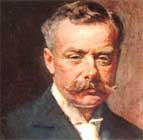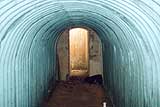 |
P.I.D. The story of Marylands |

The younger daughter of the Reverend Walter Tribe, once an Archdeacon of Lahore, Mary - nee Tribe - had been born on September 26th., 1865 and when the Reverend and his wife returned to India in 1867, Mary and her elder sister were left in the care of an aunt and uncle. The girls then attended Cheltenham Ladies College until Mary went to join her parents in India in
Whilst in India Mary met her future husband, Lord Herbrand Russell and after they were married at Barrackpore in 1888 they then returned to England. On the death of his brother, in 1893 Lord Herbrand became the 11th. Duke of Bedford and as the Duchess, Mary who had held an interest in nursing since her school days, now found herself able to fund a cottage hospital in Woburn, at No.1 Leighton Street. This opened in 1898 and treated patients from Woburn free of charge.
Mary’s ultimate ambitions were much grander, however and to accommodate the latest scientific advances in nursing and medicine she set about the founding of a

A visitors book recorded the many people who came to view the new hospital and amongst the signatures was that of Edith Cavell, in November, 1909. During World War One the hospital became part of the Military Hospital at Woburn Abbey and although now aged nearly fifty, Mary began to devote herself fully to the call of nursing. Then in 1917 she assumed the more responsible post of surgeon’s assistant and by 1920, when the last of the patients had been discharged and the Abbey Hospital closed, some 2453 battlefield casualties had been treated.

Yet another of Mary’s interests was aviation and having learnt to fly her own small aircraft, on September 9th., 1931, she piloted herself from Woburn to open the world’s first All Women’s Flying Meeting at Sywell. Then, on March 22nd., 1937 at the age of 71 she took off from Woburn Park and was never seen again. Her flight had been to view the extensive flooding in the Fens but although no body was ever recovered, the four struts between the wings were washed up at four different places on the East Coast and identified by her ground engineer.
Soon after this the Woburn Hospital closed it’s doors for good but even before her death Mary had learnt that the Duke no longer had the financial resource to keep the facility open. Instead Duke Herbrand reopened the premises as a private nursing home and renamed it Marylands. When war began in 1939, one hundred expectant mothers arrived for a week and were then transferred to Battlesden whilst the P.I.D., as a branch of the Foreign Office, took over Marylands. They returned to London in 1940 and the premises became a centre for the printing of forged documents and leaflets and before and after D Day, a dissident German army newspaper. After the war Marylands was used by Cranfield Institute as an annex for some of their students, until being purchased - together with the fifteen acres of land - by the Bedfordshire County Council, in 1967. Today the premises remain as a fine residential adult education centre, conducting an important role in conjunction with the Open University in Milton Keynes.

